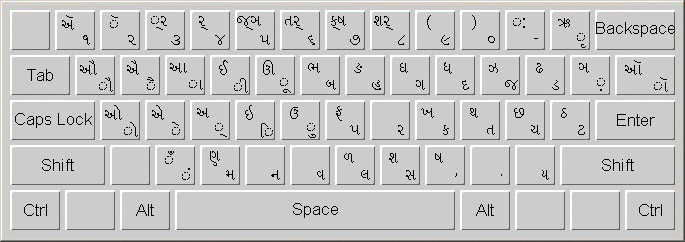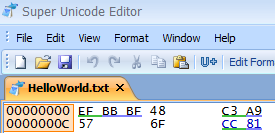

Press the + (plus) key on the numeric keypad. How do I type Unicode characters in my browser? For the uppercase Ñ, hold the Alt key then type 165. Hold the Alt key then type 164 on the numeric keypad to create a lowercase ñ.
WINDOWS TYPING UTF CODEPOINTS CODE
Entering them in Windows (eg Alt + 8) will insert the ANSI or Unicode code for that character.Įnable the numeric keypad by turning on the Num lock key. In some Dos text editors, such as Edit supplied with Windows (type Edit in Start – Run), will enter the character in the document after pressing Ctrl + P then the Ctrl + character. How do I type Unicode characters without numpad? The row of numbers above your letter keys won’t work. To type special characters in Windows, hold the Alt key, type the number code associated with the special character you want using the numpad that’s located on the right side of your keyboard. How do I get special characters on my keyboard? If you’re placing your Unicode character immediately after another character, select just the code before pressing ALT+X. Press ALT+X to convert the code to the symbol. Type the character code where you want to insert the Unicode symbol. How do I type Unicode characters in Word?

Paste / suitable keyboard doesn't cover all the cases. Typing an RFC2047 encoding into the subject line of a compose window should escape it - it's just text.Ĭonversely, there should be a mechanism to generate one that doesn't require an engineer's understanding to execute.Īnd if a message's headers DO contain an encoded subject, the Subject line in the Compose window should show the Unicode - not the =?UTF8?B? gibberish (er, encoding). On the other hand, some people (I'm not one) are in love with Emoj - and there are many more in Unicode than those on the Compose dropdown.) I'm not likely to need Unicode Klingon - but some line drawing characters. Perhaps also capture codepoints used by a TB user in his profile, so Insert->Char/sym could have a dropdown with that subset. In both the Subject and Body of a message.

Insert->Char/sym with numeric codepoint option. I realize that it may be impractical to have an exhaustive list of all unicode characters embedded in a dropdown (!) or to have a screen keyboard.Īt a minimum, a mechanism to insert by codepoint, e.g. It should be possible (and relatively easy) to do (a) and (b). So, display in a message list or message reading window decodes RFC2047-encoded subjects, but a compose window does not. In a received message, the Subject in the header includes the accented string. =?utf-8?B?bGHFrQ=?= will produce an accented string in the message list of a folder.īut it appears encoded if I open the draft.

However, if I enter a properly-encoded string in the subject, it is correctly displayed in drafts. I am aware of the ALT+numpad mechanism for entering Windows codes obviously, it doesn't work for Unicode (hex). (But MIME 2047 encoding IS supported for display.) In the body, Insert->Character and Symbols has a few limited symbols, but no way to enter an arbitrary codepoint. The subject of the original message displays properly in the read window (and in the folder's message list).īut, I wanted to insert a Unicode symbol in the subject of a complaint that forwarded the e-mail.Ī) Insert an arbitrary Unicode codepoint into the subject when composing a messageī) Insert an arbitrary Unicode codepoint into the body when composing a message I received an e-mail which contained a properly encoded U1F30F in the subject line.Ĭlick "create new message".


 0 kommentar(er)
0 kommentar(er)
